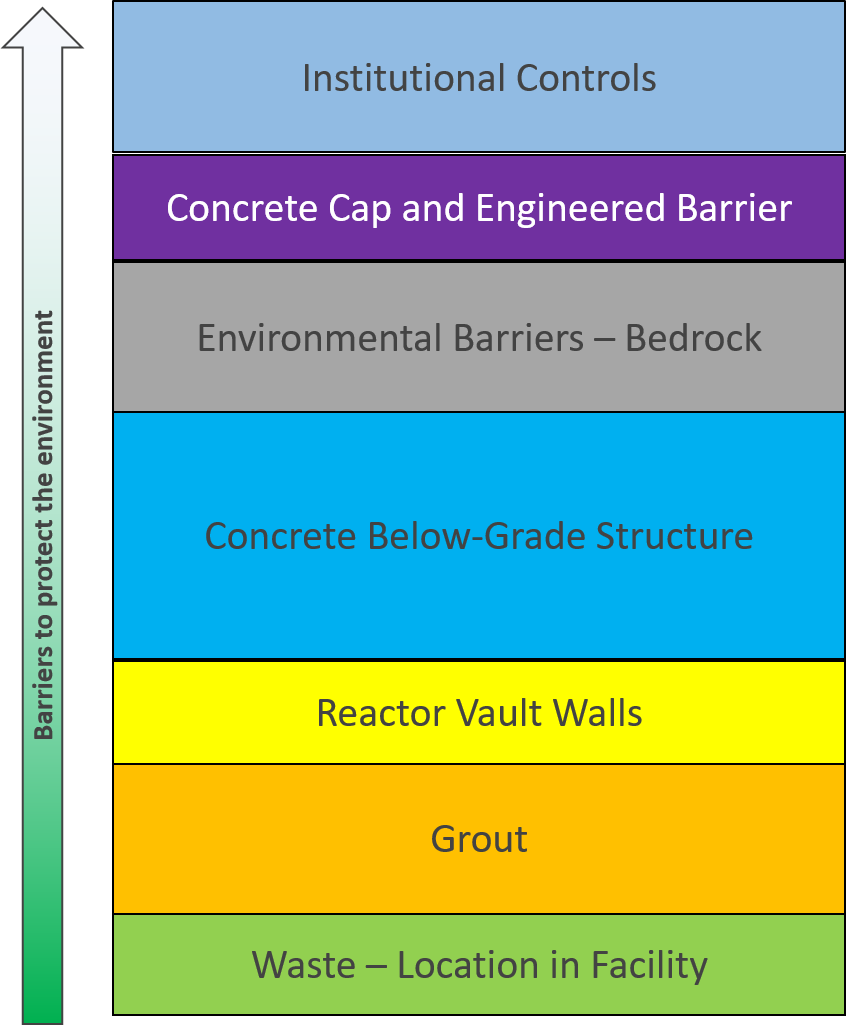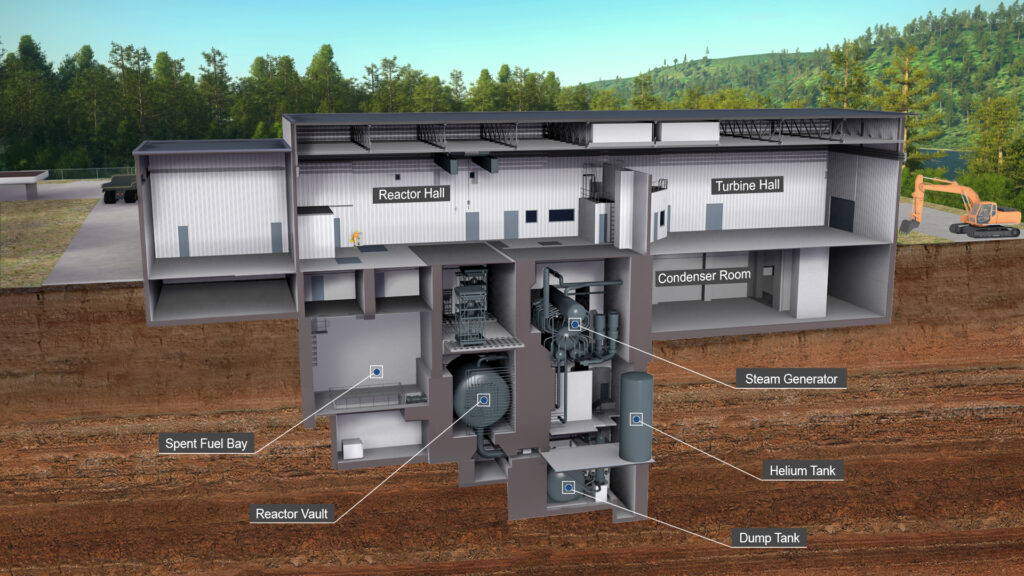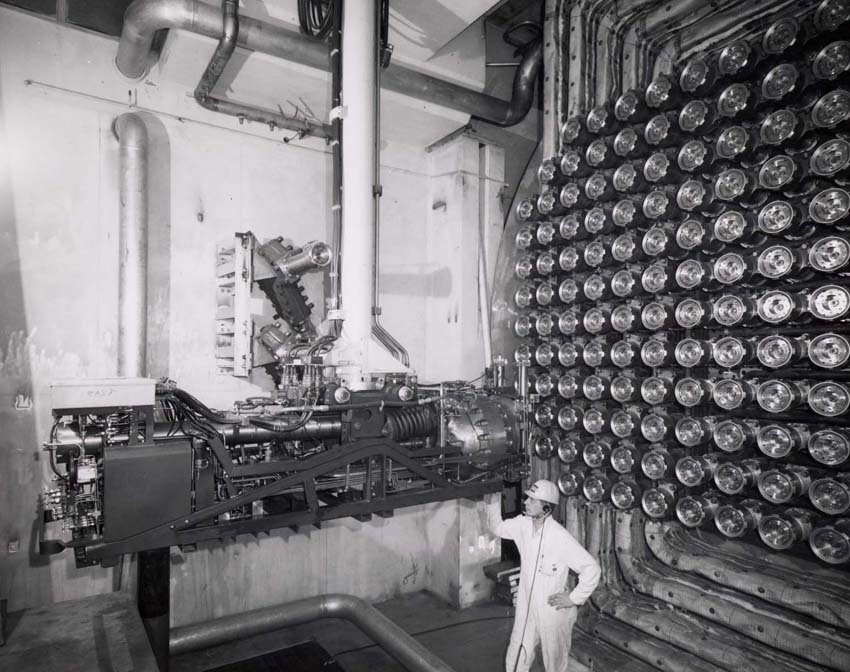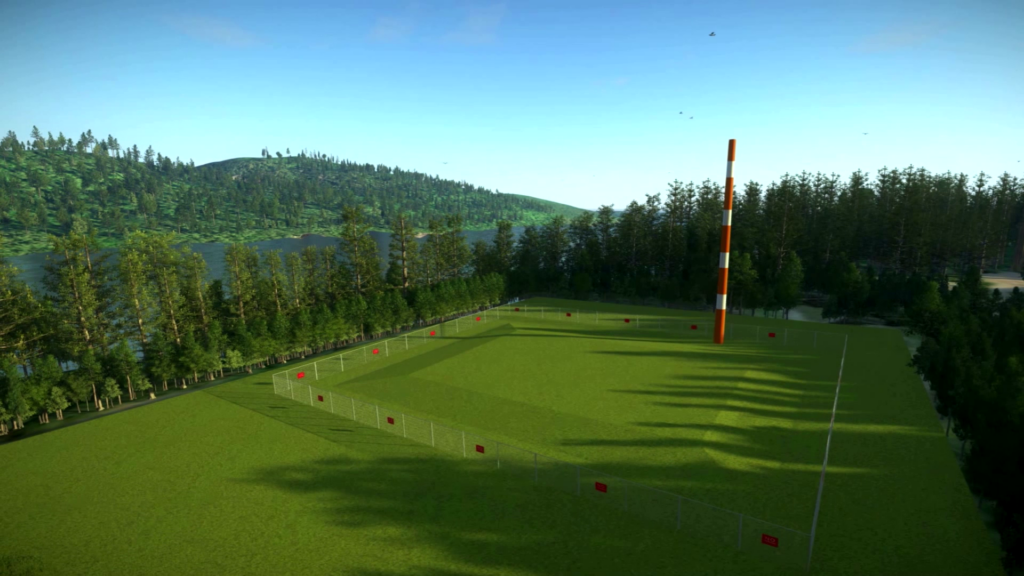Key Safety Features
The NPD facility was originally built to rigorous safety standards that makes in-situ disposal the preferred option for decommissioning. The key safety features include:
- The majority of the radioactivity is present within the reactor components contained below grade in bedrock. The reactor components include steel and zirconium, both of which will corrode very slowly.
- The existing structure extends to roughly 25 metres below grade and is built into the Canadian Shield. The structure was built using 8,000 cubic metres of concrete with walls up to 2.7 metres thick.
- The backfilled grouted structure will constrain the rates of groundwater flow and maintain an alkaline environment, which slows corrosion of radioactive components.
- The isolation of radionuclides will be further achieved by filling much of NPD with grout.
- A concrete cap will be constructed over the grouted facility above the reactor vault to provide a redundant layer of protection against inadvertent human intrusion.
- An engineered barrier will be placed over the entire facility to divert rain and melt water from the facility, and protect the facility from temperature fluctuations and other environmental effects.
These safety features either exist naturally or we have carefully designed them to ensure the long-term performance of the disposal facility.
At the time of the submission of the 2017 draft Environmental Impact Statement, CNL had completed only a preliminary design of the disposal facility. Now that CNL has a more detailed design of the disposal facility, including the engineered barrier and the finalized grout formulation, an update has been incorporated into the revised draft EIS.

Webinar:
Learn more about the key safety features
September 2020 - YouTube




